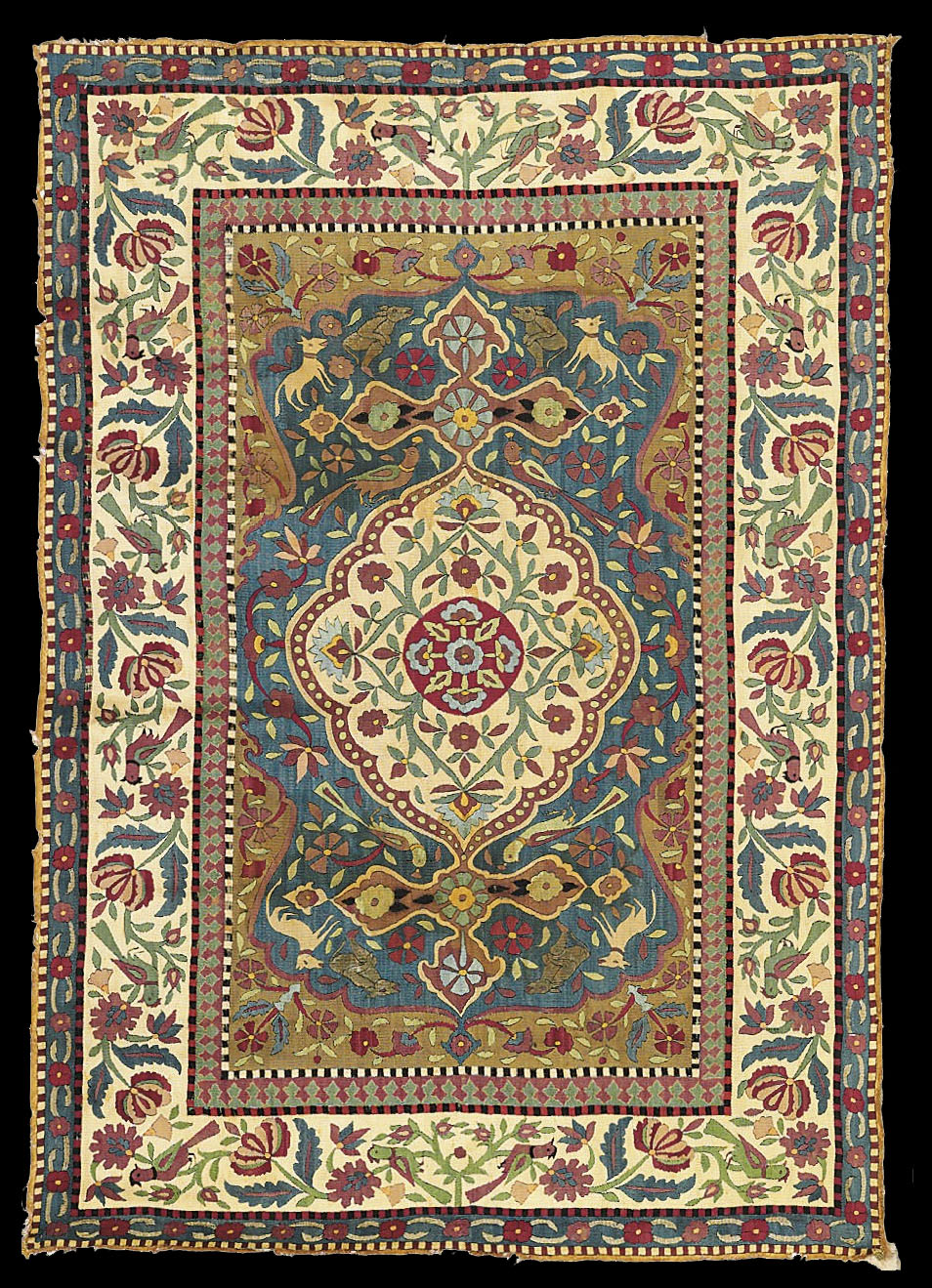|
A SILK EMBROIDERED AZERBAIJAN RUG, 18TH
CENTURY, KUBA OR KARABAGH
Price Realized £22,500 ($34,830)
Sale Information
Christie's Sale 7845
Oriental Rugs and Carpets
15 April 2010
London, King Street
Lot Description
A SILK EMBROIDERED CAUCASIAN RUG
18TH CENTURY
Embroidered in long stitch on chequered cotton ground, partly corroded
black, light stains, silk edging fraying
6ft.2in. x 4ft.5in. (188cm. x 135cm.)
The stitching on the face is in very good
condition. The only real indication of wear or use is in the black which has
partly corroded and also in the areas of pale grey which seems to be
similarly but less affected by corrosion. There are two noticeable light
brown stains in the field to one side of each of the pendants from the
medallion. These leave these areas slightly stiff. With the exception of
that the original weaving is in remarkably good condition. The edges at some
stage had a light ochre bias-cut silk backing attached all around, which
extends over the outermost 6cm. on the reverse on all four sides. This silk
is now very dry and in many places completely in ribbons. With the exception
of the staining this very rare needlework is in remarkably good condition.
Special Notice
No VAT will be charged on the hammer price, but VAT at 17.5% will be added
to the buyer's premium, which is invoiced on a VAT inclusive basis.
Lot Notes: Two different embroidery techniques were employed in Caucasian
and Azerbaijan embroideries, the cross-stitching and a diagonal long stitch.
In the present rug the latter has been used (Jennifer Wearden, "A Synthesis
of Contrasts", Hali, vol.59, pp.102-111). The long stitch allows to weavers
to create softer and more fluid, almost naturalistic forms as can be seen
here in the flowers, tendrils and the birds. These features are almost
identical with those in two silk embroidered rugs sold in these Rooms, 6
April 2006, lot 107 and 27 October 2007, lot 56.
They also share the black and white checked ground on which the pattern is
stitched. It would seem likely that the reasoning behind this was a sort of
guidance. The weaver frequently worked from a squared chart with the sketch
of the design, against which they would have been able to match their work.
It can be found only in a small number of published pieces.
The design is one of those with the most curvilinear designs of very clear
Safavid inspiration if not actual instruction. Wearden publishes three
examples whose designs very clearly derive from Safavid textiles. (op.cit.,
pls. 8, 9, 10). In terms of drawing and iconography the present rug is one
stage further removed from the high period of Safavid textile designs than
those. Even if it - as well as the two sold ones in these Rooms - have
features that they share with all the others, in style they certainly
differ. This and the fact that the present example has a classic medallion
make it possible that the origin is either South Caucasus (Karabagh?) or
even in the Persian heartlands.
|

